




| Brown Rat (Rattus norvegicus (Berkenhout, 1769)) |





|
|
Scientific name: Rattus norvegicus (Berkenhout, 1769) Common name: Brown Rat Other names: Norway Rat, Common Rat, Hanover Rat, Norwegian Rat, or Wharf Rat. French name: Rat surmulot, Surmulot, Rat brun, Rat d'égout, Rat gris. Family: Muridae Size: Body length : 27 cm; Tail length : 20 cm; Weight : 350 to 500 g. Biotope: Damp areas, pond and lake banks, riverbanks, but also near buildings in particular inside sewers. Food: Omnivorous. It feeds both on plants and animals. It can cause damage to crops or to some bird species. It is sometimes useful for waste elimination especially inside underground pipes. It is also used to gnawing anything that is on its way. Longevity : 2 to 3 years. Geographic area: Originated from northern China and Mongolia, the Brown Rat has been introduced to all continents (except Antarctica) since early XVIIIth century by sea transportation. |
The Brown Rat has a lengthy body, covered with short ruffled hair. The fur is grey-brown on the upper side and whitish grey on the under side. The ears are short, rounded and covered with very short hair. It has small black eyes. There are four fingers on the fore legs but there are five on the hind legs. The tail is naked, ringed and scaly. It is very prolific and can reproduce throughout the year. One female can have up to 7 litters of about 10 young per year. The Brown Rat is rather active during the night. They live in small family groups and can be aggressive to defend their territory. It is carrying some diseases including the plague. |
| [To know more about the Brown Rat] [Next picture] [Top] |
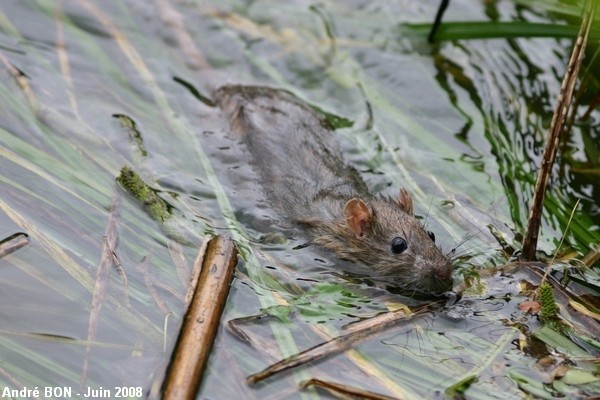
|
The Brown Rat is a very good swimmer. |
| [To know more about the Brown Rat] [Next picture] [Previous picture] [Top] |
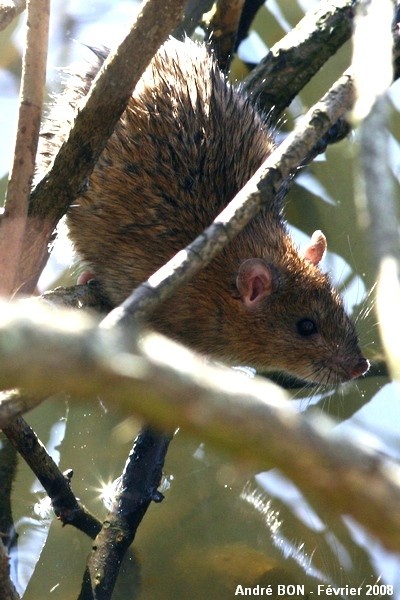
|
The Brown Rats allow us to take different pictures when walking around the ponds to shoot pictures of Grebes, Herons and other water birds. |
| [To know more about the Brown Rat] [Next picture] [Previous picture] [Top] |
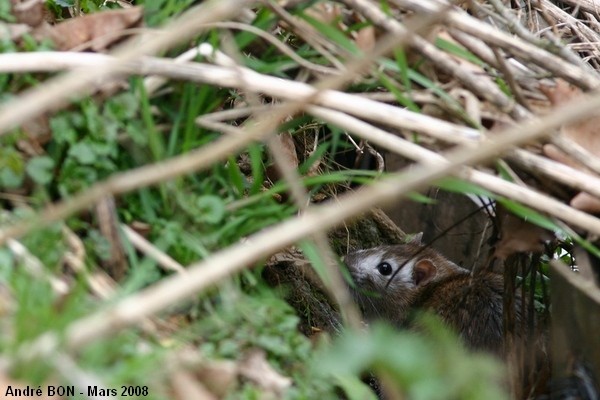
|
This Brown Rat shows strange white marks on the head. |
| [To know more about the Brown Rat] [Next picture] [Previous picture] [Top] |
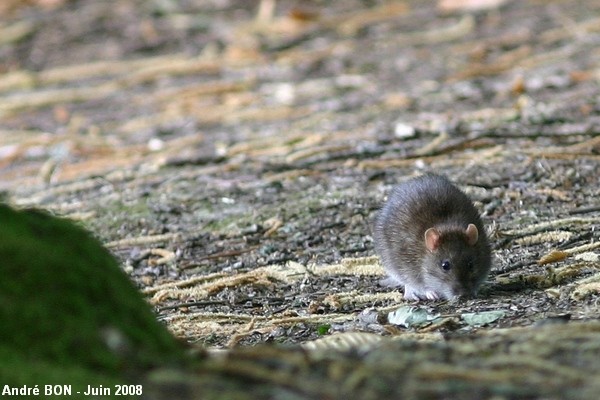
|
The short rounded ears give a cool look to the Brown Rat when on a front view. |
| [To know more about the Brown Rat] [Previous picture] [Top] |
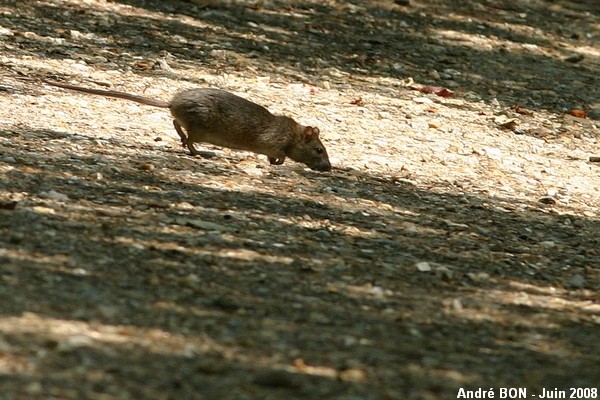
|
The footpath bordering the pond is an open area that you have to quickly cross before hiding under the dense vegetation. |